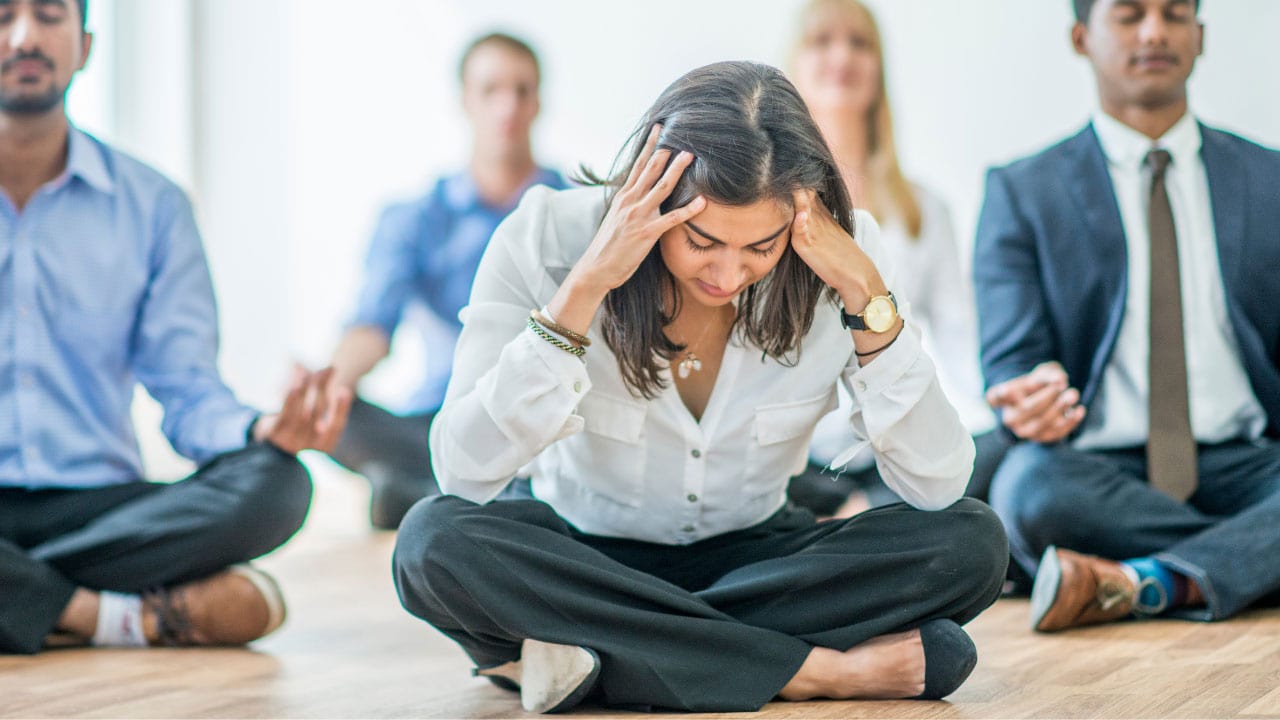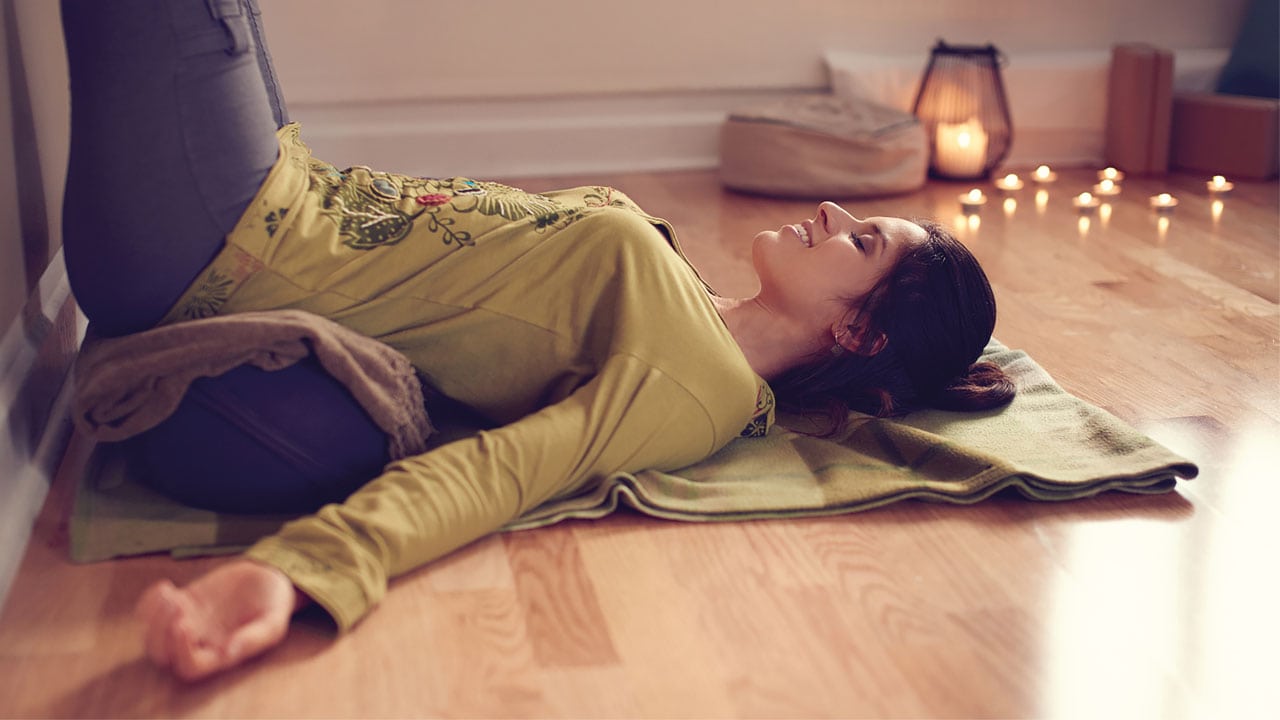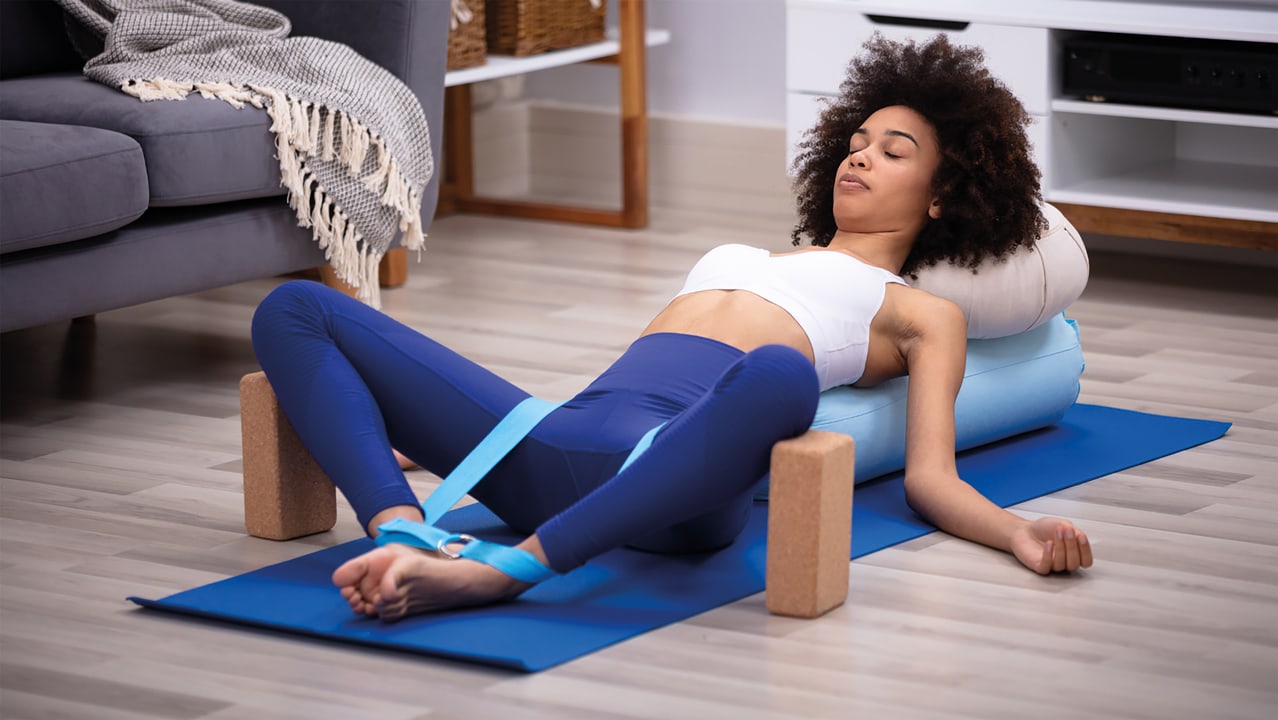
What is stress and how can yoga help?
Simple yoga practices to navigate through the stress maze. By Sally Parkes
Intermittent stress is a natural part of life that helps to keep us alive and safe. It is also helpful in that it allows us to be productive as the tension it creates give us a nudge to get things done and move forwards, thus improving our self-confidence and zest for life.
But what does stress actually mean and what is it? Defined as ‘physical, mental, or emotional strain or tension’, stress is the result of the release of the hormones adrenaline, norepinephrine and cortisol via the endocrine system. This, in small amounts, can be healthy for the human body in that it helps us to be physically and mentally active.
However, recent changes to the way we live, in part due to our so-called ‘technological advances’, have led to an expanded business day and reduced leisure time. This can mean our meals are often processed due to time constraints and our sleep is interrupted, all of which have led to a decline in our overall wellbeing.
This is largely because we are now drip-fed stress in such a way that it has become our way of being, or more accurately, our way of ‘doing’, and we have become sensitised to it. So sensitive, in fact, that a small stimulus such as our phone ringing often results in a nervous system response that leads our sympathetic nervous system (fight, flight or freeze mode) to be activated. When this repeatedly happens, we become hyper vigilant which in turn keeps us in the loop of responding to many non-threatening situations with a stress response (i.e. the release of stress hormones because our mind and body has become programmed to not feeling safe and feels it may need to act quickly in order to protect itself).
Signs of prolonged stress
Of course, over time, our mind and body will begin to complain by showing us the acute effects of stress. These can include shallow and erratic breathing patterns, increased heart rate, headaches, skin and digestive disorders, insomnia, weight gain or loss, cognitive impairment, hyperactivity and/ or fatigue, anxiety and depression.
If left untreated, these disorders can lead to more chronic stress-related conditions which can seriously affect not only our quality of life but also our mortality.
The upside, however, is that by adopting positive lifestyle changes and a simple selfcare routine, we can empower ourselves to address many of these acute symptoms of stress before they become chronic. Approaches may include limiting screen time, eating more whole foods, decreasing your availability, and putting some boundaries in place such as learning to say no more often…and of course practicing the right kind of yoga and breath work on a regular basis.
Which yoga?
It’s important that when selecting yoga asana to help us reduce the activation of the stress response, that we choose postures that allow us to breathe freely and deeply, and that we position the body in such a way that it does not have to resist against gravity, as resistance will result in tension.
In this way, we are letting the body know it’s safe to relax and soften, allowing blood to flow abundantly to all our systems, allowing deep restoration to occur.
How often?
When trying to develop any stress-reducing habit, including even a simple yoga practice, consistency is key to a positive outcome. So it’s helpful then to set attainable goals such as doing 10 minutes every other day, for example, and nurturing your commitment from there.
You may also like to make a promise to yourself that you repeatedly practice yoga, and agree to keep that promise as you would do if you made it to a close friend until a habit is formed. That way, you’ll soon start to notice that your yoga practice is a key component in the shift towards a more even energy release as your stress response settles down, allowing the parasympathetic nervous system (rest and digest system) to work at a more optimum level with serotonin, dopamine and oxytocin flowing more freely, allowing you to heal a little more each day on both a cellular and energetic level.
Ideal calming yoga asana include:
For improved blood flow
Legs up the wall pose: Known for its grounding effects, this asana also encourages blood flow to the major organs within the pelvis and lower abdomen, helping them function more effectively.

For improved digestion
Supported side twist: By rotating the lower back and pelvis in this way, blood flow is restricted, so when the asana is released, fresh blood flushes through the lower abdominal and digestive organs, thus enhancing the body’s natural ability to detox.

For quietening a busy mind
Supported child’s pose: By closing down the front of the body in this way we are able to minimise external stimulation and calm the mind. Child’s pose can also relieve an achy lower back.

For better breathing
Supported reclined cobbler’s pose: A heart-opening yoga asana which also helps to stretch the diaphragm allowing for increased lung expansion and therefore increased oxygen uptake.

Disclaimer: this article is in no way intended as a replacement for medical advice or care.
Sally Parkes BSc is a senior yoga teacher for @movementformodernlife and runs certified 200hr, Yin, Fertility, Prenatal and Postnatal Yoga teacher training. @sallyparkesyoga sallyparkesyoga.com





